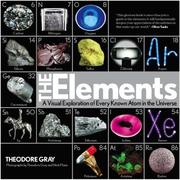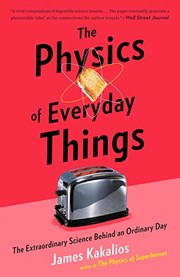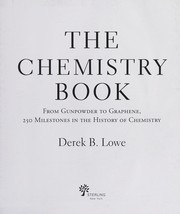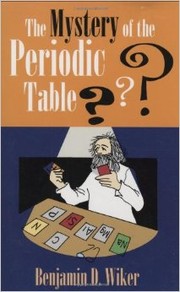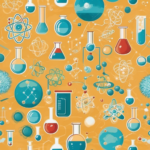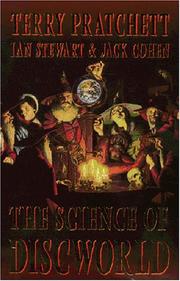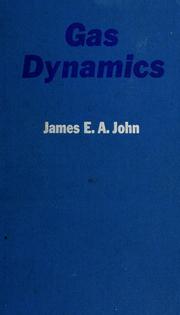Are you looking for the best books on solids, liquids, and gases? Whether you’re a science enthusiast, a teacher, or a student, understanding the properties and behaviors of these fundamental states of matter is crucial. Dive into the fascinating world of chemistry and physics with our curated list of the 20 best books about solids, liquids, and gases. From comprehensive textbooks to engaging children’s literature, these titles cover everything from the basics to advanced concepts. Whether you’re seeking to expand your knowledge or looking for educational resources, these solids liquids and gases books are sure to captivate and educate. Let’s explore the wonders of matter together!
Contents
- 1 20 Best Solids Liquids And Gases Books
- 2 The Disappearing Spoon: And Other True Tales of Madness, Love, and the History of the World from the Periodic Table of the Elements
- 3 Stuff Matters: Exploring the Marvelous Materials That Shape Our Man-Made World
- 4 The Elements: A Visual Exploration of Every Known Atom in the Universe
- 5 The Physics of Everyday Things: The Extraordinary Science Behind an Ordinary Day
- 6 The Periodic Table: A Visual Guide to the Elements
- 7 The Chemistry Book: From Gunpowder to Graphene, 250 Milestones in the History of Chemistry
- 8 The Science of Cooking: Every Question Answered to Perfect Your Cooking
- 9 The Big Fat Surprise: Why Butter, Meat, and Cheese Belong in a Healthy Diet
- 10 The Physics Book: From the Big Bang to Quantum Resurrection, 250 Milestones in the History of Physics
- 11 The Mystery of the Periodic Table
- 12 The Science of Interstellar
- 13 The Elements of Murder: A History of Poison
- 14 The Science of Harry Potter: How Magic Really Works
- 15 The Periodic Table: Its Story and Its Significance
- 16 The Science of Discworld
- 17 Molecules: The Elements and the Architecture of Everything
- 18 Gas Dynamics
- 19 The Solid State
- 20 Solid State Physics
- 21 The Cartoon Guide to Chemistry
- 22 Final Thoughts on Best Solids Liquids And Gases Books
- 23
20 Best Solids Liquids And Gases Books
The Disappearing Spoon: And Other True Tales of Madness, Love, and the History of the World from the Periodic Table of the Elements
by Sam Kean
The Disappearing Spoon: And Other True Tales of Madness, Love, and the History of the World from the Periodic Table of the Elements by Sam Kean is a captivating exploration of the periodic table and the fascinating stories behind each element. Kean delves into the world of chemistry, bringing to life the quirky, dramatic, and often bizarre history of the elements. From the explosive love affairs of chemists to the political intrigues surrounding the discovery of new elements, this book is a delightful blend of science, history, and human drama.
Readers will be drawn into the world of chemistry as Kean uncovers the secrets and mysteries hidden within the periodic table. Whether you’re a science enthusiast or simply curious about the world around you, The Disappearing Spoon is a must-read for anyone interested in the stories behind the elements that make up our world. This book offers a unique perspective on the building blocks of matter and will leave you with a newfound appreciation for the elements that shape our lives.
Stuff Matters: Exploring the Marvelous Materials That Shape Our Man-Made World
by Mark Miodownik
Stuff Matters: Exploring the Marvelous Materials That Shape Our Man-Made World by Mark Miodownik is a fascinating exploration of the everyday materials that make up our world. Miodownik takes readers on a journey through the world of materials, from the everyday to the extraordinary, and explores the science and history behind them.
This book delves into the properties and uses of a wide range of materials, including metals, ceramics, polymers, and composites. Miodownik’s engaging writing style and enthusiasm for his subject make complex scientific concepts accessible and captivating for readers of all backgrounds.
As a book about solids, liquids, and gases, Stuff Matters offers a unique perspective on the materials that surround us, revealing the hidden wonders of the substances we often take for granted. Whether you’re a science enthusiast or simply curious about the world around you, this book provides an eye-opening look at the materials that shape our lives.
The Elements: A Visual Exploration of Every Known Atom in the Universe
by Theodore Gray
The Elements: A Visual Exploration of Every Known Atom in the Universe by Theodore Gray is a fascinating book that delves into the world of chemistry and the building blocks of matter. This visually stunning book provides an in-depth look at each of the elements, offering detailed information on their properties, history, and uses. With beautiful photographs and engaging descriptions, readers can explore the periodic table in a whole new light.
Whether you’re a science enthusiast or just curious about the world around you, this book is sure to captivate and educate. It’s a perfect choice for anyone interested in learning more about the fundamental components of the universe. From hydrogen to helium, from carbon to calcium, The Elements takes readers on a journey through the vast and diverse world of atoms and molecules. This book is a must-have for anyone interested in chemistry, physics, or the natural world. It’s a visually stunning and informative guide to the building blocks of everything around us.
The Physics of Everyday Things: The Extraordinary Science Behind an Ordinary Day
by James Kakalios
The Physics of Everyday Things by James Kakalios is a fascinating exploration of the extraordinary science behind our ordinary daily activities. In this engaging book on solids, liquids, and gases, Kakalios delves into the physics behind the objects and forces that we encounter every day, from the technology in our smartphones to the forces at play when we ride a bike or turn on a light switch.
Through clear explanations and relatable examples, Kakalios breaks down complex scientific concepts, making them accessible and interesting for readers of all backgrounds. Whether you’re a science enthusiast or simply curious about the inner workings of the world around you, this book about solids, liquids, and gases will leave you with a newfound appreciation for the physics that governs our everyday lives.
With its blend of real-world examples and insightful explanations, The Physics of Everyday Things is a must-read for anyone looking to gain a deeper understanding of the science behind the objects and phenomena we encounter in our daily routines.
The Periodic Table: A Visual Guide to the Elements
by Paul Parsons
The Periodic Table: A Visual Guide to the Elements by Paul Parsons is a captivating exploration of the building blocks of our universe. This visually stunning book delves into the fascinating world of elements, providing a comprehensive overview of their properties, uses, and significance. From the essential gases that make up our atmosphere to the diverse range of solids and liquids that form the foundation of our everyday lives, this book offers a captivating journey through the periodic table.
With vibrant illustrations and engaging explanations, this book is an ideal resource for anyone looking to deepen their understanding of chemistry and the elements. Whether you’re a science enthusiast or simply curious about the world around you, The Periodic Table: A Visual Guide to the Elements is a captivating exploration of the diverse world of matter. This book about solids, liquids, and gases is a must-read for anyone seeking to unlock the mysteries of the elements that shape our world.
The Chemistry Book: From Gunpowder to Graphene, 250 Milestones in the History of Chemistry
by Derek B. Lowe
The Chemistry Book: From Gunpowder to Graphene, 250 Milestones in the History of Chemistry by Derek B. Lowe is a fascinating exploration of the key events, discoveries, and individuals that have shaped the field of chemistry. This captivating book takes readers on a journey through the history of chemistry, from the invention of gunpowder to the discovery of graphene, highlighting 250 pivotal moments that have revolutionized our understanding of the world of matter.
With engaging and informative entries, this book offers a comprehensive look at the development of chemistry, covering a wide range of topics including elements, compounds, reactions, and the properties of matter. From the study of solids, liquids, and gases to the exploration of chemical reactions and the development of new materials, The Chemistry Book provides a rich and insightful overview of the key milestones that have shaped the field of chemistry.
Whether you’re a chemistry enthusiast or simply curious about the world of matter, this book about solids, liquids, and gases is a must-read for anyone interested in the history and evolution of chemistry.
The Science of Cooking: Every Question Answered to Perfect Your Cooking
by Dr. Stuart Farrimond
The Science of Cooking: Every Question Answered to Perfect Your Cooking by Dr. Stuart Farrimond is a fascinating exploration of the principles behind cooking. This book delves into the world of culinary science, providing insights into the interactions of ingredients, the physical and chemical changes that occur during cooking, and the best techniques to achieve perfect results in the kitchen.
Dr. Farrimond’s engaging writing style and clear explanations make complex scientific concepts accessible to home cooks and food enthusiasts. Whether you’re a novice in the kitchen or a seasoned pro, this book will deepen your understanding of the processes that take place when you cook, from the behavior of solids, liquids, and gases to the transformation of flavors and textures.
With stunning visuals and practical tips, The Science of Cooking is the ultimate guide for anyone who wants to elevate their culinary skills and gain a deeper appreciation for the science behind the art of cooking. This book about solids, liquids, and gases will revolutionize the way you approach food and empower you to become a more confident and creative cook.
The Big Fat Surprise: Why Butter, Meat, and Cheese Belong in a Healthy Diet
by Nina Teicholz
The Big Fat Surprise by Nina Teicholz is a groundbreaking book that challenges the conventional wisdom about dietary fats. Teicholz argues that the demonization of saturated fats, such as butter, meat, and cheese, in the 20th century was based on flawed science and has led to a rise in obesity, diabetes, and heart disease. Through extensive research and compelling evidence, she makes the case that these fats are not only harmless but also beneficial for our health.
Teicholz takes readers on a journey through the history of nutrition and exposes the flawed studies and biased agendas that have shaped our dietary guidelines. She also delves into the science behind fats, explaining how they are essential for our bodies and challenging the belief that low-fat diets are the key to good health.
This eye-opening book provides a fresh perspective on nutrition and offers a compelling argument for reevaluating our attitudes towards fats. Whether you’re a health enthusiast or simply curious about the topic, The Big Fat Surprise is a must-read for anyone interested in understanding the role of fats in a healthy diet.
The Physics Book: From the Big Bang to Quantum Resurrection, 250 Milestones in the History of Physics
by Clifford A. Pickover
The Physics Book: From the Big Bang to Quantum Resurrection, 250 Milestones in the History of Physics by Clifford A. Pickover is a captivating exploration of the most significant discoveries and developments in the field of physics. This comprehensive book delves into a wide range of topics, from the fundamental principles of motion and energy to the mind-bending concepts of quantum mechanics and relativity.
Readers will embark on a fascinating journey through the history of physics, uncovering the stories behind groundbreaking experiments, revolutionary theories, and the brilliant minds that shaped our understanding of the universe. With its engaging narrative and stunning visuals, this book offers a unique opportunity to deepen one’s knowledge of the natural world and the forces that govern it.
Whether you’re a physics enthusiast or simply curious about the mysteries of the cosmos, The Physics Book is an essential addition to any library. It provides a compelling look at the evolution of our understanding of the world around us, making it a must-read for anyone interested in the wonders of the universe.
The Mystery of the Periodic Table
by Benjamin D. Wiker
The Mystery of the Periodic Table by Benjamin D. Wiker is a captivating exploration of the elements that make up the world around us. In this thought-provoking book on solids, liquids, and gases, Wiker delves into the history and significance of the periodic table, unraveling the stories behind the discovery of each element and the impact they have had on human civilization. Through engaging narratives and insightful analysis, the author brings to life the fascinating world of chemistry, making it accessible and intriguing for readers of all backgrounds.
With its blend of science, history, and philosophy, this book about solids, liquids, and gases offers a unique perspective on the building blocks of matter, shedding light on the mysteries and wonders of the natural world. Whether you’re a science enthusiast or simply curious about the elements that shape our existence, The Mystery of the Periodic Table is sure to enlighten and inspire.
The Science of Interstellar
by Kip Thorne
The Science of Interstellar by Kip Thorne is a fascinating exploration of the scientific concepts behind the blockbuster film Interstellar. Thorne, a renowned physicist and Nobel Prize winner, delves into the realms of astrophysics, relativity, and the nature of space-time, providing readers with a deeper understanding of the mind-bending concepts that underpin the movie’s interstellar journey.
Thorne’s engaging writing style and expert knowledge make this book a captivating read for anyone interested in the mysteries of the universe. From black holes and wormholes to the behavior of matter in extreme environments, The Science of Interstellar offers a compelling look into the physics of the cosmos.
Whether you’re a fan of the film or simply intrigued by the wonders of the universe, this book about solids, liquids, and gases will expand your understanding of the science that shapes our reality. Thorne’s expertise and enthusiasm for the subject shine through, making The Science of Interstellar an illuminating and thought-provoking exploration of the cosmos.
The Elements of Murder: A History of Poison
by John Emsley
The Elements of Murder: A History of Poison by John Emsley is a captivating exploration of the dark and deadly world of toxins. Emsley delves into the history, science, and real-life cases of poisoning, painting a vivid picture of the use of poisons throughout the ages. This book is not just a dry scientific text; it is a thrilling journey through the shadowy world of murder and intrigue. The author skillfully weaves together the stories of notorious poisoners with the chemistry behind their deadly concoctions, making for a truly engaging read.
Readers will be fascinated by Emsley’s in-depth exploration of the elements that make up poisons, and how they interact with the human body. This is a book about solids, liquids, and gases, but it’s not your typical scientific tome. It’s a gripping look at the deadly substances that have shaped history and captured the public imagination for centuries. The Elements of Murder is a must-read for anyone with an interest in the darker side of chemistry.
The Science of Harry Potter: How Magic Really Works
by Roger Highfield
The Science of Harry Potter: How Magic Really Works by Roger Highfield is a captivating exploration of the scientific principles behind the magical world of Harry Potter. Highfield delves into the realm of potions, spells, and mythical creatures, drawing parallels between the fantastical elements of the series and real-life scientific concepts. This book is not just a typical book on solids, liquids, and gases; it goes beyond that, providing a fascinating look at the chemistry, physics, and biology that underpin the wizarding world.
Highfield’s engaging writing style makes complex scientific ideas accessible to readers of all ages, as he explains the connections between magic and the natural world in a way that is both educational and entertaining. Whether you’re a die-hard Harry Potter fan or simply curious about the science behind the magic, this book about solids, liquids, and gases is sure to captivate and enlighten you with its unique blend of fantasy and reality.
The Periodic Table: Its Story and Its Significance
by Eric R. Scerri
The Periodic Table: Its Story and Its Significance by Eric R. Scerri is a fascinating exploration of the history and significance of the periodic table. This book delves into the development of the periodic table, from its early beginnings to its modern-day significance in the field of chemistry. Scerri provides an engaging narrative that takes readers on a journey through the discovery of elements and the organization of the periodic table, shedding light on the scientific breakthroughs and controversies that have shaped our understanding of the elements.
Through Scerri’s in-depth analysis, readers gain a deeper appreciation for the role of the periodic table in understanding the properties and behaviors of elements, as well as its impact on the broader scientific community. Whether you’re a chemistry enthusiast or simply curious about the world of elements, this book offers an enlightening and accessible exploration of the periodic table and its enduring significance.
The Science of Discworld
by Terry Pratchett, Ian Stewart, and Jack Cohen
The Science of Discworld is a fascinating collaboration between the renowned fantasy author Terry Pratchett, mathematician Ian Stewart, and biologist Jack Cohen. This unique book combines elements of fiction and non-fiction, with the authors alternating between chapters of a Discworld story and explanations of scientific concepts.
At its core, The Science of Discworld is a book about the fundamental principles of the universe, including the creation of the universe, the nature of time, and the evolution of life. Through the lens of the Discworld universe, the authors explore complex scientific concepts in an engaging and accessible way, making it a perfect read for both science enthusiasts and fans of Pratchett’s work.
With a focus on the fundamental building blocks of matter, this book on solids, liquids, and gases delves into the intricacies of the physical world, offering a blend of humor, imagination, and educational insights. Whether you’re looking for a thought-provoking exploration of scientific ideas or simply a captivating story, The Science of Discworld is a must-read for anyone interested in the mysteries of the universe.
Molecules: The Elements and the Architecture of Everything
by Theodore Gray
Molecules: The Elements and the Architecture of Everything by Theodore Gray is a fascinating exploration of the building blocks of the universe. In this visually stunning book, Gray takes readers on a journey through the world of atoms and molecules, showcasing the beauty and complexity of the elements that make up everything around us.
This is not your average book on solids, liquids, and gases. With stunning photography and engaging writing, Gray brings the periodic table to life, revealing the incredible diversity and interconnectedness of the elements. From the familiar (like water and salt) to the exotic (like radioactive elements), Gray explores the role of each element in our world, making complex scientific concepts accessible and engaging for all readers.
Whether you’re a science enthusiast or simply curious about the world around you, this book about solids, liquids, and gases will captivate and inspire you. Molecules is a celebration of the beauty and wonder of the natural world, and a reminder of the incredible complexity that lies beneath the surface of everyday objects.
Gas Dynamics
by James E. A. John
Gas Dynamics by James E. A. John is a comprehensive book on the behavior and properties of gases. This engaging and informative book delves into the fascinating world of gases, exploring their dynamics, thermodynamics, and fluid mechanics. With a focus on the behavior of gases in motion, this book provides a detailed understanding of the principles and applications of gas dynamics.
Readers will gain valuable insights into the behavior of gases in various environments, from the Earth’s atmosphere to outer space. The book covers topics such as compressible flow, shock waves, and combustion, offering a thorough exploration of the fundamental concepts and practical implications of gas dynamics.
Whether you’re a student, researcher, or professional in the field of fluid mechanics or aerospace engineering, Gas Dynamics is an essential read for anyone seeking to deepen their understanding of the behavior of gases. This book about solids liquids and gases will undoubtedly broaden your knowledge and appreciation of the dynamic nature of gases.
The Solid State
by H. M. Rosenberg
The Solid State by H. M. Rosenberg is a fascinating exploration of the world of materials, offering a comprehensive understanding of the behavior and properties of solids, liquids, and gases. This book delves into the intricate structure of matter, providing a detailed analysis of the physical and chemical properties of different states of materials. From the atomic and molecular level to macroscopic properties, this book covers it all, making it an essential read for anyone interested in the science of materials.
Rosenberg’s clear and concise writing style makes complex concepts easy to understand, making this book accessible to students and professionals alike. Whether you’re a novice looking to grasp the basics or an expert seeking a deeper understanding, The Solid State provides a wealth of knowledge on the subject. With its insightful explanations and practical examples, this book is a valuable resource for anyone curious about the world of solids, liquids, and gases.
Solid State Physics
by Neil W. Ashcroft
Solid State Physics by Neil W. Ashcroft is a comprehensive and engaging exploration of the fundamental principles and phenomena of condensed matter. This book delves into the intricate world of materials science, providing a thorough examination of the behavior of solids, liquids, and gases at the atomic and molecular level. With its clear explanations and insightful discussions, this book offers a deep understanding of the physical properties and behaviors of condensed matter, making it an essential read for students, researchers, and enthusiasts interested in the study of materials.
The Cartoon Guide to Chemistry
by Larry Gonick and Craig Criddle
The Cartoon Guide to Chemistry by Larry Gonick and Craig Criddle is a fun and informative book that takes readers on a whimsical journey through the world of atoms, molecules, and chemical reactions. This graphic novel-style book uses humor and easy-to-understand illustrations to explain complex concepts in chemistry, making it accessible for readers of all ages and backgrounds.
Whether you’re a student struggling to grasp the basics of chemistry or simply curious about the building blocks of the universe, this book about solids, liquids, and gases is a must-read. It covers everything from the periodic table to chemical bonding, and even delves into the fascinating world of acids, bases, and chemical reactions.
With its engaging storytelling and colorful artwork, The Cartoon Guide to Chemistry is an entertaining and educational resource that will leave readers with a newfound appreciation for the wonders of the scientific world. This book on solids, liquids, and gases is sure to spark a love for chemistry in anyone who picks it up.
Final Thoughts on Best Solids Liquids And Gases Books
Exploring the world of solids, liquids, and gases through literature can be an enlightening and enjoyable experience. The 20 best books about solids, liquids, and gases offer a wide range of perspectives and insights into these fundamental states of matter. Whether you’re interested in educational resources, entertaining stories, or in-depth scientific explanations, these books have something to offer for readers of all ages. Dive into these captivating reads and enhance your understanding of the fascinating world of solids, liquids, and gases.
Which book about Solids Liquids And Gases is best?
The best book on Solids Liquids And Gases can vary with personal preference, but three widely recommended titles are:
- The Disappearing Spoon: And Other True Tales of Madness, Love, and the History of the World from the Periodic Table of the Elements by Sam Kean,
- Stuff Matters: Exploring the Marvelous Materials That Shape Our Man-Made World by Mark Miodownik,
- The Elements: A Visual Exploration of Every Known Atom in the Universe by Theodore Gray.
Each offers valuable insights and could be a great starting point.
What are the best books to learn about Solids Liquids And Gases?
For those looking to learn about Solids Liquids And Gases, there is a wealth of literature that can provide a comprehensive understanding of the subject. Some of the most highly recommended books include:
- The Disappearing Spoon: And Other True Tales of Madness, Love, and the History of the World from the Periodic Table of the Elements by Sam Kean,
- Stuff Matters: Exploring the Marvelous Materials That Shape Our Man-Made World by Mark Miodownik,
- The Elements: A Visual Exploration of Every Known Atom in the Universe by Theodore Gray,
- The Physics of Everyday Things: The Extraordinary Science Behind an Ordinary Day by James Kakalios,
- The Periodic Table: A Visual Guide to the Elements by Paul Parsons,
- The Chemistry Book: From Gunpowder to Graphene, 250 Milestones in the History of Chemistry by Derek B. Lowe,
- The Science of Cooking: Every Question Answered to Perfect Your Cooking by Dr. Stuart Farrimond,
- The Big Fat Surprise: Why Butter, Meat, and Cheese Belong in a Healthy Diet by Nina Teicholz,
- The Physics Book: From the Big Bang to Quantum Resurrection, 250 Milestones in the History of Physics by Clifford A. Pickover,
- The Mystery of the Periodic Table by Benjamin D. Wiker
These books offer a range of perspectives on Solids Liquids And Gases, covering various aspects and approaches to the subject.
What are the best books about Solids Liquids And Gases?
The best books about Solids Liquids And Gases are:
- The Disappearing Spoon: And Other True Tales of Madness, Love, and the History of the World from the Periodic Table of the Elements by Sam Kean,
- Stuff Matters: Exploring the Marvelous Materials That Shape Our Man-Made World by Mark Miodownik,
- The Science of Interstellar by Kip Thorne,
- The Elements of Murder: A History of Poison by John Emsley,
- The Big Fat Surprise: Why Butter, Meat, and Cheese Belong in a Healthy Diet by Nina Teicholz,
- The Chemistry Book: From Gunpowder to Graphene, 250 Milestones in the History of Chemistry by Derek B. Lowe.
Each offers unique insights into the subject. While these books about Solids Liquids And Gases are highly regarded, it’s important to note that any list of ‘best’ books is subjective and reflects a range of opinions.
What are the best Solids Liquids And Gases books of all time?
Choosing the best Solids Liquids And Gases books of all time can vary depending on who you ask, but five titles that are often celebrated include
- The Disappearing Spoon: And Other True Tales of Madness, Love, and the History of the World from the Periodic Table of the Elements by Sam Kean,
- Stuff Matters: Exploring the Marvelous Materials That Shape Our Man-Made World by Mark Miodownik,
- The Periodic Table: A Visual Guide to the Elements by Paul Parsons,
- The Big Fat Surprise: Why Butter, Meat, and Cheese Belong in a Healthy Diet by Nina Teicholz,
- and The Science of Interstellar by Kip Thorne.
Each of these books has made a significant impact in the field of Solids Liquids And Gases and continues to be influential today.



